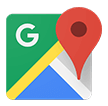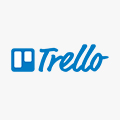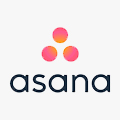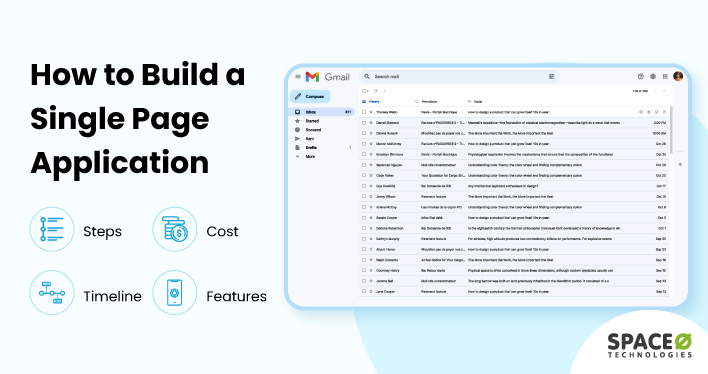- Cost to build a single-page application starts from $1,000 and can range from $100,000 depending on the complexity.
- Dynamic content updates and smooth navigation are two important features of single-page applications.
Key Takeaways
Do you want to develop a single-page application (SPA) but aren’t sure where to start and how to create it?
If you have Googled, ” I want to develop a single-page application” or “What is the process to create a single-page app” and found us, you have landed on the right place.
Being a leading web application development service provider for more than a decade; many of our clients ask the same question – how to build single-page applications without coding experience.
So, we decided to share our process of making the single-page app from doing market research to deployment. From this blog, you will understand the journey from concept to creation and the cost & timeline involved in developing the single-page app.
Let’s get started.
Table of Contents
7-Step Guide to Develop Single Page Application
In this section, we will understand the 7-step process to create a single-page app. Let’s get started with step 1.
Perform Market Research and Define Your Target Audience
Let’s first quickly go through the market research.
Understanding Market Research
Before plunging into the development of a product, it’s important to gain insights into the market landscape. Let’s illustrate this with an example. Suppose you want to create a single-page application for personal fitness tracking:
- Identify Competitors: Start by identifying existing fitness-tracking web apps like Fitbit, MyFitnessPal, or Strava. These are your direct competitors.
- Analyze Competitor Offerings: Use these applications and get to know their features. Identify what they do well, and more importantly, where they fall short.
- User Reviews: User reviews and comments on app stores and social media are often important information. They provide insights into what potential users might expect from your app.
Identifying Market Trends
Observing market trends is crucial in the planning phase:
- Feature Trends: Look for trends or rising demands for certain features in the fitness tracking market. For example, is there an increased interest in diet tracking or sleep quality analysis?
- Technology Trends: Stay informed about the latest tech trends, such as the growing demand for real-time data tracking or integration with other smart devices.
Now, let’s understand the target audience.
Defining Your Target Audience
Finally, understanding your target audience is important to developing an app that meets their needs:
- Audience Profile: Consider factors such as age, occupation, interests, and tech-savviness of your audience. For a fitness tracking app, your target audience could be health-conscious individuals, fitness enthusiasts, or people with specific health goals.
- Audience Needs and Preferences: You can use surveys or conduct interviews to understand your audience’s needs and preferences. Tools like Google Forms or SurveyMonkey can help gather this data.
Once you are done with research and understanding your target audience, choose the development team who can help you to build a single-page application.
Choose a Web App Development Company or the Development Team
Once you’ve determined that a single-page app is the right choice for your project, the next crucial step is selecting a competent web application development company. Making a well-informed choice at this juncture can set the tone for the success of your project. Here are some factors you should consider:
- Experience and Portfolio: Ensure the company has significant experience in web app development, particularly in building a single-page application. Ask for their portfolio and check out the single-page apps they’ve developed. It gives you an idea about the quality of their work, their style, and their capability to handle projects similar to yours.
Expertise in Single Page Application Frameworks: Single-page web apps are primarily built using JavaScript frameworks such as Angular, React.js, or Vue.js.
To learn more about more such web app frameworks go through our post about the best single page application frameworks. This post will help you choose the best single-page application framework for your project. This will help you ensure the company has expertise in that particular framework.
- Reputation and Reviews: Look out for customer reviews and ratings of the company. It can offer valuable insights into the company’s reliability, work ethic, and commitment to customer satisfaction.
- Communication and Collaboration: Effective communication and collaboration are key to the success of any project. Make sure the company values open communication and keeps you informed about the progress of the project at every stage.
- Post-Development Support: Developing the app is just half the journey. It’s equally important that the company provides reliable post-development services like app maintenance, updates, bug fixes, etc.
- Pricing: Finally, discuss the pricing. The cost of developing a single-page application framework varies widely based on the complexity of the app, the features you want, and the rates of the development company. Ensure that the cost aligns with your budget without compromising on the quality of the app.
Choosing the right SPA app development company can be a critical decision in your process to create a successful single-page application. Consider all these factors and choose a company that aligns best with your vision, project requirements, and budget.
At Space-O, we combine our expertise, experience, and commitment to customer satisfaction to bring your vision to life. Each project at Space-O is handled by a dedicated team that includes experienced developers, creative UI/UX designers, skilled testers, and a project manager. This dedicated team approach ensures smooth coordination and a focused effort toward your project.
Designing Your Single Page Application
Following the development of your single-page app, the next step involves your UI/UX design team. They will shape the user interaction and aesthetic appeal of your application according to your established requirements.
- The Design Process Followed to Develop Single Page Application
Our UI/UX designers closely collaborate with the development team and stakeholders to ensure the design meets the functional needs and expectations. They start by reviewing the developed functionalities and aligning them with the project’s goals and the needs of the target audience.
Next, they create wireframes that provide a visual representation of the application’s interface. Wireframes serve as a blueprint for the layout of the application, depicting the placement of elements and features on each page.
Upon approval of the wireframes, they proceed to develop a prototype. This is a clickable version of your application that helps visualize the app’s look and feel and tests its functionality and user experience.
- The Design Process Followed to Develop Single Page Application
Development of Your Single Page Application
This is where your entire website will be developed from scratch. In this phase, your development team begins to code the application according to the plans and designs set out in the previous steps.
Working with a team experienced in single-page apps, like ours at Space-O Technology, means you’re developing SPA as per your custom requirements. Our developers are experienced in using modern JavaScript frameworks such as Angular, React, and Vue.js, which are essential tools for creating single-page apps.
While developing your application, our team of developers focuses on various factors specific to single-page application architecture, such as:
- Efficient Client-Side Scripting: Single-page apps rely heavily on client-side scripting, and our team is well-versed in optimizing this to ensure seamless navigation and reduced load times.
- Effective State Management: With SPAs, state management is handled client-side. We ensure that the state of your application is maintained accurately and efficiently, providing a consistent user experience.
- Advanced Routing: In SPAs, routing is managed in the browser, which can be complex. Our developers are skilled in using JavaScript libraries and frameworks to handle this effectively, maintaining the speed and smoothness of navigation.
- Security: We adopt robust security measures to protect your SPA against potential security vulnerabilities. This includes securing data transmission and using token-based authentication.
By considering these factors specific to single-page application architecture, we ensure the development of an interactive, and secure application that meets your requirements.
Throughout this stage, the team ensures to build a single-page application that is efficient, interactive, and user-friendly. This is achieved by following best coding practices, writing clean and manageable code, and focusing on building an application that performs well and provides a seamless user experience.
During the single-page application development process, we encourage our clients to stay involved. Regular check-ins and updates are part of our workflow, allowing us to incorporate your feedback, make necessary adjustments, and ensure that the application is aligned with your vision.
Testing Your Single-Page Application
Quality assurance is an important step in our development process, which guarantees the delivery of a high-quality, error-free single-page application. The dedicated team of QA professionals ensures your application meets the highest standards before it goes live. Tools like Selenium, JMeter, and Jest can help automate many aspects of testing, making it more efficient and reliable.
The QA team, with their deep understanding of SPA-specific challenges, conducts a series of rigorous tests to ensure that every aspect of your application is functioning as expected. They examine each component, interaction, and functionality to detect and rectify any bugs or issues.
They work closely with the development team, providing feedback and insights that lead to immediate issue resolution and thus minimizing the time-to-market. This continuous collaboration guarantees the smooth operation of your application, ensuring a seamless and enjoyable user experience.
Launching Your Single Page Web Application
After thorough testing and QA, it’s time to launch your application. This is a critical phase where your application becomes accessible to your users. It’s vital to ensure that all server settings are configured correctly and that the launch process is smooth, as a negative initial experience could deter potential users.
The company chooses the right hosting environment for your application, based on factors such as expected traffic, resources, and application architecture. They then prepare your application for deployment, optimizing its performance, securing any API keys or environment variables, and removing debugging code.
The company deploys your application after choosing a hosting service. They manage this meticulously, following the guidelines provided by the hosting service to ensure a successful deployment. This comprehensive approach ensures your application is not only successfully launched, but also primed for growth and success.
Post-Launch Optimization and Updates
This phase focuses on refining your application based on user feedback and analytics. Regular performance checks and updates are vital for maintaining a seamless user experience. It’s also important to introduce new features periodically to stay competitive and meet users’ evolving needs. Analytics play a crucial role in revealing user behavior, helping you identify areas for improvement. Keep in mind that a successful SPA is a result of continuous refinement and responsiveness to user needs and technological trends.
From the above steps, you now know the process to build a single-page web application. After knowing the process, you might want to know the process to build a single-page web application.
Wondering if Your Single Page App Idea Will Work?
Let’s validate your idea. With thorough research and market analysis, we define your project scope and check your idea’s feasibility.

Have a Project in Your Mind?
Want to validate your app idea? Want to get a free consultation from an expert?
How Much Does it Cost to Build a Single Page Application?
The cost to build a single-page application (SPA) can vary significantly based on a multitude of factors such as the complexity of the application, the features required, the geographic location, and the experience level of the SPA development team.
Let’s break it down based on the complexity of the SPA. The below table discusses single-page application examples, cost, and timeline to build SPA.
| Type of SPA | Single-Page Application Examples | Real-world Instances | Timeline | Cost |
|---|---|---|---|---|
| Simple Single Page Application | Personal blog, small business website, basic portfolio website | Mark Manson’s Blog, Annie Leibovitz’s Portfolio | 1-4 weeks | $1,000 – $5,000 |
| Medium Single Page Application | eCommerce site, interactive portfolio site, educational site with registration and course listings | ASOS, Duolingo, Zara | 1-3 months | $5,000 – $20,000 |
| Complex Single Page Application | Large-scale data-driven application, social networking site, complex data visualization tool | Gmail, Google Docs, Trello, Google Maps | 3-6 months+ | $20,000 – $100,000+ |
Note: This is approx single-page application development cost and timeline. The final cost depends upon the single-page app features and functionalities and the developer’s hourly rate.
Now, let’s understand the features of single-page web solutions in the next section.
Top 10 Must-Have Features In Single Page Applications
Below, we have outlined the top 10 must-have features in a SPA. Let’s understand each with its description.
| Sr. No | Must-Have Features | Description |
|---|---|---|
| 1 | Dynamic Content Loading | This allows for quick and seamless loading of new content without refreshing the entire page. |
| 2 | Asynchronous Data Fetching | This enables the entire app to fetch, display, and update data in real time without new page reloads. |
| 3 | Form Submissions and Buttons | Users should be able to fill out and submit forms and click buttons to perform actions like saving data or opening new views, with the application reacting immediately. |
| 4 | Efficient State Management | The application should remember a user’s actions or inputs across multi-page apps. |
| 5 | URL Routing | This feature allows users to bookmark or share a particular section of the application. |
| 6 | Autocomplete Search | This enables users to quickly find and navigate to different sections or all the data within the application. |
| 7 | Instant Form Validation | This feature provides users with immediate feedback on their inputs in form fields. |
| 8 | Real-time Updates | This feature allows the application to push updates to the user’s view in real time, without the need for user-initiated refreshes. |
| 9 | Lazy Loading | This feature allows for loading and displaying content only when it’s needed, improving the initial page load time. |
| 10 | Drag and Drop Functionality | This enables users to intuitively move and organize elements within the application. |
Above were some of the important features that you can integrate into a SPA. Now let’s understand some of the top examples of single-page apps.
Top 5 Single Page Applications You Should Know
Here are the top 5 single-page application examples in various domains such as mapping, project management, and social media.
| Single Page App Name | Short Description |
|---|---|
 Google Maps Google Maps | Online mapping service that provides interactive maps, directions, and location search functionalities. |
 Trello Trello | Collaborative project management tool that helps users organize and track tasks on customizable boards. |
| Social media platform that allows users to post and interact with short messages, known as tweets. | |
 Asana Asana | Project management and team collaboration platform for organizing tasks, assigning responsibilities, and tracking progress. |
 GitHub GitHub | Web-based dynamic platform for version control and collaboration, facilitating code sharing and management for developers. |
You have learned about the steps, cost, features, and top 5 SPAs. Now, let’s learn more about web page applications in the next section.
FAQ About Building Single Page Application
What are the advantages of a single-page application?
The top 10 advantages of SPAs are
- Enhances user experience with smooth and responsive navigation
- Provides faster performance through dynamic content updates without web page reloads
- Reduces bandwidth usage and faster loading times
- Offers Interactive features like real-time updates and instant validation
- Provides offline functionality with caching for accessing the app offline
- Has easier maintenance with a single codebase
- Offers scalability for handling large amounts of data efficiently
- Provides seamless integration with APIs and third-party services
- Offers Mobile app-like experience with smooth transitions and responsive design
- Has Cross-platform compatibility for a consistent user experience
Which are some popular frameworks to build a single-page app?
Popular JavaScript frameworks for SPA development are Angular, React.js, and Vue.js. Each of these frameworks has its strengths and the choice between them will depend on the specific needs of your project.
What is client-side routing in SPAs?
In a SPA, routing is managed by JavaScript on the client side rather than by a server. This means that when a user clicks a link or a button in the app, the URL changes but the request to the server is not sent. Instead, a new view is loaded into the browser, providing a smoother, faster experience for the user.
What is the difference between traditional multi-page websites and single-page applications?
Traditional multi-page websites require page reloads for each interaction, while SPAs provide a seamless user experience with instant updates and smoother transitions within a single page.
Let’s Develop Your Single Page Application
Single-page application development requires careful planning, a competent development team, and a user-centric approach. However, with the right steps and strategies, you can create a powerful, interactive, and engaging application that stands out in the digital space.
Space-O is a leading web app development company for 10+ years with a strong focus on creating impactful SPAs. Our experienced team of developers and designers is dedicated to delivering dynamic SPAs that ensure your application stands out.
Contact us today to discuss your project and how we can help bring your vision to life.



